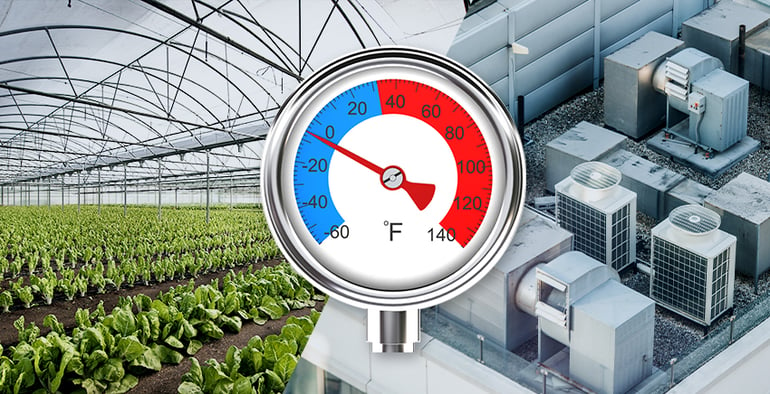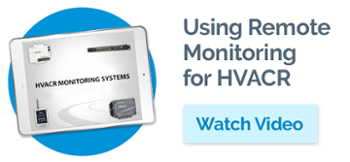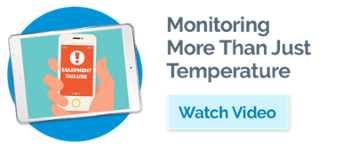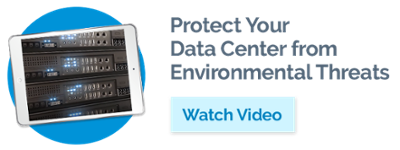
Temperature is one of the most important environmental conditions when managing facilities. This post is the second in our Know Your Environmental Threat series. It discusses how temperature monitoring is used to protect valuable assets in multiple applications including HVAC, server rooms and data centers, food storage facilities, greenhouses, medical facilities, and livestock and animal care.
HVAC
Temperature control goes hand-in-hand with humidity control in keeping the occupants of a building comfortable. The American Society of Heating, Refrigerating and Air-Conditioning Engineers (ASHRAE) recommends a wide range of ideal temperatures, from 68°F - 74°F in the winter and 72°F - 80°F in the summer, depending on the type of facility.For facilities like hotels, restaurants, office buildings, entertainment venues and other places where people gather, comfort is the main goal. However, other places like gyms, greenhouses, medical storage departments may have very specific temperature requirements that go beyond comfort to maintain a healthy environment and protect valuable assets. This means it’s very important for facility managers to know if temperature readings are too high or too low.
Sensaphone offers several different systems that monitor temperature, whether you need it for a whole building or a single room. You configure the system with the safe temperature range, and it alerts you when temperature moves higher or lower than that range. If required, these systems can also monitor conditions such as humidity, motion, moisture, flow rates, equipment failure, power failure and vibration. Systems for HVAC environments include:
● Sentinel
● Stratus EMS
● IMS-1000
● WSG 30 Monitoring System

Server Rooms and Data Centers
IT managers in charge of server rooms are usually focused on cyber threats like hacks and viruses. However, there are physical dangers for which they should also be mindful. This starts with the air temperature of the server rooms.
Because of their complex infrastructure, server rooms are generally energy intensive. Understanding the cooling structure can help your business decide whether a particular facility can protect and maintain your equipment.
ASHRAE recommends keeping data centers between 64°F and 80°F. If a room gets too hot, it can cause thermal stress on the computers and equipment. Exposure to high temperatures over a period of time can reduce the overall life of the equipment. Specifically, some facilities require directed cooling for each rack or cabinet contained within its own system.
Arrange racks so they don’t draw hot air from other servers, and be sure to monitor the position of the cables and hardware in the room so they don’t block the airflow to and from servers.
Computer equipment will not typically be impacted by a cold environment. However, keeping these facilities excessively cool is a waste of energy and adds an unnecessary expense to your business.
Sensaphone’s IMS-4000 series allows companies to monitor numerous threats besides temperature. Users can easily connect 8 plug and play sensors to each host or node to monitor conditions like humidity, power failure, water leaks, and equipment failure.
The Stratus EMS is a cloud-based, rack-mounted system that delivers real-time status of equipment and environmental conditions to your smartphone, tablet or computer. This technology can monitor up to 64 Modbus values and includes 12 digital/analog universal inputs for external sensors to monitor temperature, vibration, differential pressure, leaks, airflow and humidity.
Food Storage Facilities
Food can spoil quickly if not maintained at the proper temperature. Monitoring technology can easily track temperatures in freezers and storage rooms. It can also track conditions like power outages, equipment failure and water leaks that affect temperature, so you can proactively maintain the cold chain and prevent wasted food inventory. If the system senses a temperature change or change in conditions out of the designated zone, the system will send instant alerts to your phone via an email or text.
Sensaphone systems such as the Sensaphone Sentinel or WSG 30, are ideal for food manufacturing facilities, food processing and storage facilities, food service and retail locations. They provide the extra layer of protection at all times for unattended refrigeration.
Sensaphone systems are also used to monitor ultra-low temperature freezers and refrigerators that contain valuable beverages like rare or collectible wines.
Greenhouses
Keeping plants alive, healthy and maturing as quickly as possible requires an optimal growing environment. It is critical to maintain the ideal growing temperature.In general, dramatic temperature fluctuations can affect the plants inside greenhouses, particularly in areas that get very cold at night. Temperatures that are too hot can cause leaves to wilt and affect the plants’ ability to produce fruit. It can also dry out the soil too quickly and kill plants.
Sensaphone’s monitoring technology will help you maintain your greenhouse by alerting you when temperatures reach unsafe levels. The system can also alert you to mechanical issues that will cause temperature changes such as circulation fan or exhaust fan failures, or when vents fail to open and release heat. This eliminates having to manually check temperatures during the day and prevents damage from malfunction that occur after hours or overnight.
After losing the inventory from an entire greenhouse because of a heater malfunction, owners of Wood’s Greenhouse in Asbury, New Jersey, decided to not take a chance again and purchase the Sentinel Cellular system. Additionally, they can use the app to adjust the temperature ranges on nights that are extremely cold when the heaters can’t keep the temperature at the pre-set levels. They can change all the settings, disable the alarms, change recognition times and set high and low temperature limits right from the app.

Medical Facilities
Medical and pharmaceutical products can be ruined if exact temperatures are not maintained while in storage. Whether you are storing vaccines, tissue samples, medicine, or other medical supplies, Sensaphone systems can constantly monitor temperatures to prevent spoilage. It will also log all data for compliance documents.Making sure everything is constantly stored at the correct temperature is a challenge, particularly in ultra-low freezers that are required for some vaccines, including ones for COVID-19. Sensaphone’s technology will monitor temperature as well as other conditions like power outages, equipment failure and water leaks.
The VFC Refrigerator Temperature Sensor with Display, for example, comes with a 2” LCD display that shows the highest and lowest temperatures, provides an audible alarm when temperatures get out of range, and can turn on a light or siren for additional onsite alarm notifications.
This information can be viewed remotely from phones or tablets. The data is also logged automatically, for easy submission of monthly compliance reports. Alerts can also be sent to designated personnel offsite so you don’t have to worry about supplies being spoiled overnight or on holidays when no one is at the facility.
Bio-Nuclear, a manufacturer of specialized medical devices, equipment,vaccines and chemical reagents, uses Sensaphone’s Web600 systems to monitor climate-controlled areas, medical refrigerators and freezers, warehouses and data centers to ensure that all of their medical assets are kept within the required temperature ranges.

Livestock and Animal Facilities
When caring for livestock and other animals, it is important to continuously monitor temperature to ensure their safety and health.In Mississippi, the Sentinel and Web600 Series remote monitoring systems are used to monitor chicken houses. This technology saved an entire flock of chickens when the power failed and the temperature dropped dramatically.
In zoos, cold-blooded animals like snakes or reptiles rely on external heat sources to stay warm. If a malfunction to the heating system occurs on a cold winter night when no one is there, those animals will be in grave danger. Remote monitoring systems can help mitigate the threats to animals by alerting staff members of a problems that occur after hours.
In 2019, the Elmwood Park Zoo, located in Norristown, PA, experienced a power outage that put their animals in danger because their previous alert system failed. Thankfully, no animals died, but the zoo now uses a Sensaphone WSG30 wireless monitoring system to watch the areas that house reptiles and monkeys. If there is an issue with temperature or other environmental factors, the system alerts the owner and up to 32 staff members.
Sensaphone systems are also used to monitor zebrafish used for scientific research on genetic diseases. These fish are very sensitive to their environment and require specific water temperature to survive. The Sensaphone Sentinel is used to help researchers maintain the ideal environment for these fish.
No matter what the environment, improper temperatures can threaten human comfort, equipment and assets. It is easy and inexpensive to prevent these threats by installing a remote monitoring system.
To learn how you can select or upgrade a monitoring system at your facility, contact a Sensaphone expert today.








